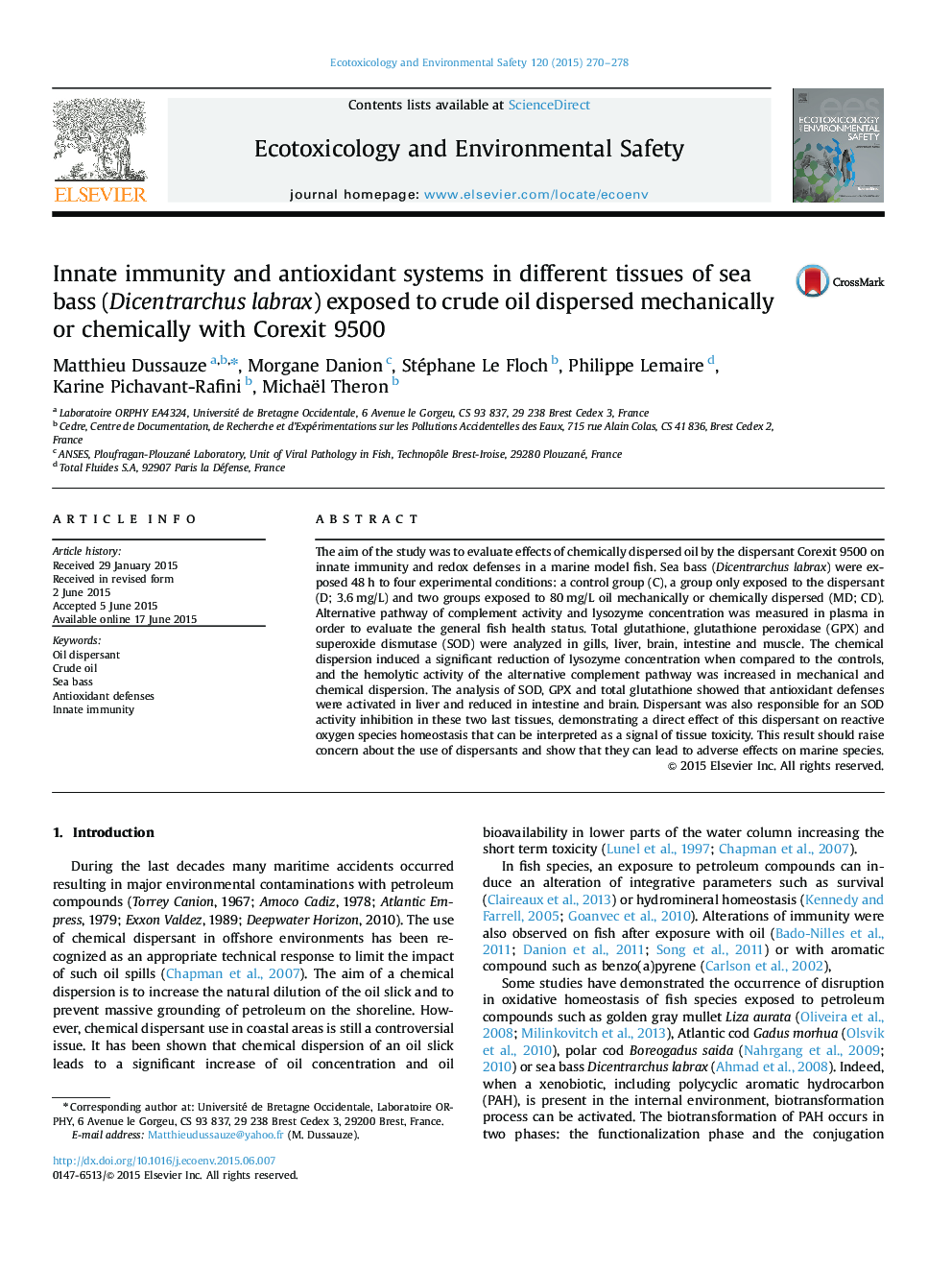| Article ID | Journal | Published Year | Pages | File Type |
|---|---|---|---|---|
| 4419380 | Ecotoxicology and Environmental Safety | 2015 | 9 Pages |
•Effects of chemical dispersion of oil by Corexit 9500 on sea bass were analyzed.•Lysozyme concentrations and complement alternative pathway activity were analyzed.•Total glutathione, superoxide dismutase and glutathione peroxidase were analyzed.•Five tissues/organs (gill, liver, brain, intestine and muscle) were assessed.
The aim of the study was to evaluate effects of chemically dispersed oil by the dispersant Corexit 9500 on innate immunity and redox defenses in a marine model fish. Sea bass (Dicentrarchus labrax) were exposed 48 h to four experimental conditions: a control group (C), a group only exposed to the dispersant (D; 3.6 mg/L) and two groups exposed to 80 mg/L oil mechanically or chemically dispersed (MD; CD). Alternative pathway of complement activity and lysozyme concentration was measured in plasma in order to evaluate the general fish health status. Total glutathione, glutathione peroxidase (GPX) and superoxide dismutase (SOD) were analyzed in gills, liver, brain, intestine and muscle. The chemical dispersion induced a significant reduction of lysozyme concentration when compared to the controls, and the hemolytic activity of the alternative complement pathway was increased in mechanical and chemical dispersion. The analysis of SOD, GPX and total glutathione showed that antioxidant defenses were activated in liver and reduced in intestine and brain. Dispersant was also responsible for an SOD activity inhibition in these two last tissues, demonstrating a direct effect of this dispersant on reactive oxygen species homeostasis that can be interpreted as a signal of tissue toxicity. This result should raise concern about the use of dispersants and show that they can lead to adverse effects on marine species.
